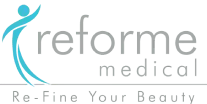IPL Photofacial

IPL stands for Intense Pulsed Light; it is the concept where a mix of specific Light Energy Wavelengths is applied to the skin surface. The IPL energy will heat up different depths or layers of the skin, resulting in Exfoliation, Pigmentation Reduction, and stimulation of collagen production. It is one of the Non-invasive, Non-Ablative Skin Resurfacing Treatments.
What are the benefits of IPL Photofacial, and what is an IPL Photofacial good for?
The IPL Photofacial is a light-based skin treatment that uses a mix of light energy to reduce skin problems like brown spots, red spots, sun damage, and rosacea. It can also be used for problems like broken veins, broken capillaries, redness, and spider veins. An IPL photofacial will also improve the impact of enlarged skin pores and light skin wrinkles. IPL is also one of the best hair reductions (hair on the face, neck, back, chest, legs, underarms, or bikini area) treatments for type 1–3 skin (fair to light olive-toned skin).
What is the difference between IPL and Lasers?
IPL uses a mix of Light Energy Wavelengths that are tuned by changing the Filters in front of a Light Source. LASER, which stands for Light Amplification by Stimulated Emission of Radiation, emits just One Light Energy Wavelength, so it is a much more specific type of energy device.
Frequently Asked Questions
Can I do IPL at home?
Are there any contraindications for an IPL photofacial?
Is the IPL Photofacial painful? Can I go back to work after my Photofacial treatment?
How long does an IPL photofacial take?
What is the aftercare routine after IPL Photofacial? What should I avoid after the session?
What is the IPL photofacial recovery like, what to expect?
Can IPL cause scarring? What are the possible risks, complications, and adverse effects?
How many IPL photo facial treatments are needed?
For skin pigmentation, broken veins, or exfoliation, even a single IPL session might be enough, but some patients might need up to 3–6 treatments.
What are the pros and cons of IPL?
What are the alternatives to IPL?
Approximate Costs
An accurate estimate of the costs is only possible after an in-clinic consultation with Dr Prashant. We charge a £50 deposit to secure your consultation with Dr Prashant, this amount will be deducted from the costs of the treatment you go on to have at our clinic.
We don’t currently offer IPL at Reforme Medical, but refer our patient to our sister clinics in Cardiff, where the cost will vary from £60 – £250/treatment.
